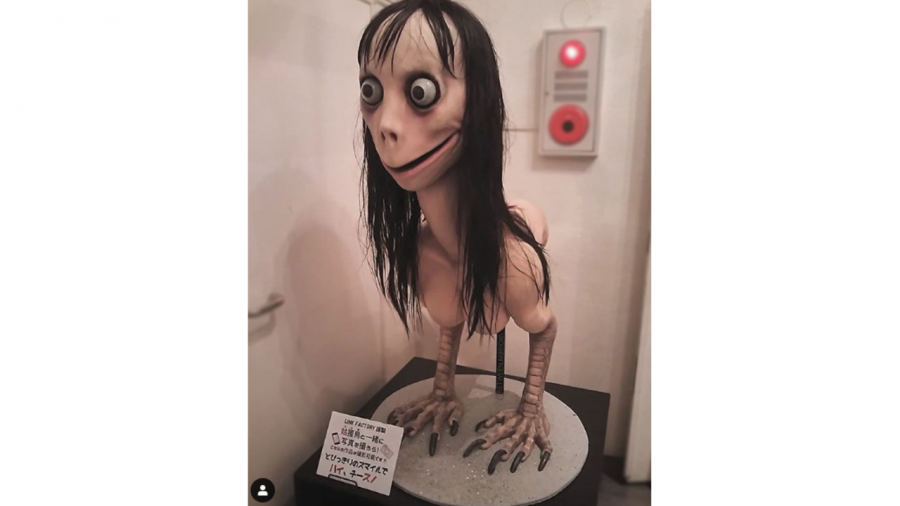Beware of Momo
The original “Momo” image comes from a sculpture by a Japanese artist named Keisuke Aisawa.
March 12, 2019
Recently, a New Jersey school has warned parents of a returning trend circulating around a disturbing figure named “Momo.” In entertainment platforms targeted towards the youth, Momo would appear and encourage children to participate in a challenge that encourages suicide and other harmful actions. However, some claim that the trend is a hoax and experts have labelled the situation a “moral panic”, according to Patch News.
Just as before, the trend starts off with a normal children’s video. While the beginning is innocent and free of suspicious activities, Momo, the scary doll-like figure, would appear and pressurize the young and clueless audience to commit dangerous actions. Some videos would instruct kids towards self harm, actions that harm their families, and even suicide in order to “avoid being cursed.” Because children are still young, Dr. Hess emphasizes that “their brains are are not fully developed so they’re not able to think through complex situations such as the things that they are seeing.” Therefore, they would not be able to detect if the character is threatening or not, according to CBS News.
Due to multiple appearances of Momo on Youtube Kids, the creator has issued a statement regarding their cooperation in removing those videos. A Youtube representative spoke with CBS and expressed that their “Community Guidelines prohibit harmful and dangerous challenges, including promoting the Momo challenge, and we remove this content quickly when flagged to us.”
Parents have also been heavily warned by schools and numerous posts that were spread on social media. In the posts, they encourage parents to delete certain apps off of their children’s tablets, iPads, and other mobile devices or to stiffly monitor their kids’ entertainment programs and videos.
The issue was quickly trending on Twitter with numerous teenagers and young adults making light of the situation, of course with humorous memes, about how they would get physical with Momo if she should appear. Some even facetuned, an app used to photoshop, the creepy figure into a regular girl with normal features.
However, some critics have stated that the challenge was a complete hoax. Since there is no physical evidence regarding Momo harassing children and proof of them harming themselves, some people claimed that the issue was blown up and that it “received a signal boost from the media”, according to Inverse.
Originally, the character was a sculpture created by a Japanese artist named Keisuke Aisawa. The artwork was revealed in 2016 in Tokyo, and there is no evidence that the creator is directly linked with the production of the dangerous craze.
No matter if the challenge is real or not, the situation shines a light on how dangerous the media can be for children. Due to their young age and obliviousness, Courtney Huitt (12) states that “it is rather easy to target and influence kids towards performing deathly actions.” One simple video can result in the worst consequences a child can ever experience. Adults should take caution when allowing their youths to independently stream videos, for nothing is completely safe in the open media. While the Internet can bring meaningless entertainment, it can also expose the innocent to the most vile ideas.











































